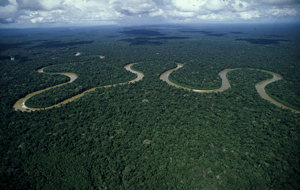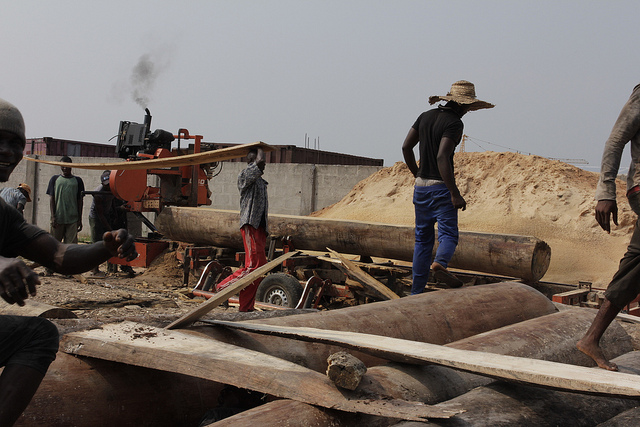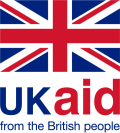You are here
Congo Basin

Understanding the Forest-Water Interactions in the Congo Basin
PROGRAM SUMMARY
The development objective of this project is to improve the understanding of forest-water interactions in the Congo Basin across World Bank project teams, client countries and climate scientists in Africa, and to strategize potential application to development programs and policies in the region. The analysis seeks to use emerging data and research to identify links between forest loss and degradation and water resources in the Congo Basin in the context of climate variability, covering impacts both locally and from a regional hydrologic cycle perspective.
CHALLENGE
The Congo Basin represents roughly 70% of Africa’s forest cover and is the second largest contiguous tropical forest in the world after the Amazon Basin. The Congo Basin provides many ecosystem services (carbon and non-carbon) but the forests are under pressure from economic activity such as logging, agriculture, energy, transport, and mining, and satellite-based data show that annual rates of deforestation have doubled since 1990 (World Bank 2013). Climate change is predicted to impact the Congo Basin significantly: since the 1950's, the region has experienced a 1°C increase in mean annual temperature (Niang et al. 2014; Fuller et al. 2018); by the 2080's, climate models suggest temperatures will increase 3 to 5°C and precipitation will decrease by 40% (Fotso-Nguemo 2016).
Understanding the impacts of forest loss within the Congo Basin and regionally is limited due to limited information on the linkages between forest loss and environmental services in the Congo Basin, particularly of the role of the forest in generating rainfall both locally and regionally. While much of the research related to the impact of tropical forests on rainfall and temperature has been undertaken in the Amazon, the few studies that have been conducted in the Congo Basin indicate that the region is a major source (17%) of moisture for West Africa (Cadet and Nnolli; Gong and Eltahir). One study estimates that the rain forests of West Africa may account for 30-40% of the annual rainfall in the Ethiopian highlands (Ellison 2018). Others suggest that the main source of rainfall in the Congo Basin is evaporation from the Great Lakes and that the Congo forest basin in turn generates much of the rainfall not only in the Congo basin (75-95%) (Brinkman 1983 in Job 1994) but also in the Sahel (van der Ent et al. 2010). At the same time, the drying trend in the Basin suggested by some scientific papers (Zhou et al. 2014) may impact this “water pump” service it provides. Such impacts are well described for the Amazon, where scientists have warned of an “Amazon dieback” or “savanization” of the Amazon (Vergara and Scholz 2011).
APPROACH
- The activity expanded the available evidence base through the production of an innovative online, interactive e-book. This e-book/knowledge portal houses both a data and analytics portal for the Congo Basin across numerous social, economic, and environmental themes; and a knowledge portal containing relevant literature, reports, investments, videos and programs in the Congo Basin.
- Community of Practice Formed. The team held numerous consultations (both in-person and virtually) with Bank teams working within the region, relevant academic experts, donor and other organizations. The CoP distribution list developed had over 200 people and is expected to be useful for the future as well.
- Two global virtual discussions undertaken. The first discussion session was held in September 2019 with over 50 participants; a smaller, more focused session was held in December 2019 with about 20-25 participants.
For stories and updates on related activities, follow us on twitter and facebook, or subscribe to our mailing list for regular updates.
Last Updated : 06-09-2020

Share
Related Links
Sectoral Report: Mining (April 2013)
Republic of Congo: Balancing Mining Development and Forest Conservation in the Congo Basin
Keywords
Congo Basin, Cross-sectoral, Green Growth, Land Tenure, Mining
Authors/Partners
World Bank Africa Region and World Bank Oil, Gas and Mining Policy Division (SEGOM).
Balancing Mining Development and Forest Conservation in the Congo Basin
CHALLENGE
Deforestation in the Congo Basin is expected to increase significantly in the future as investment in productive sectors grows. Thus, it will be essential to assist Congo Basin countries in ensuring that forestland development is planned and implemented in such a way as to avoid, minimize and/or offset unnecessary economic losses and social hardship and to draw optimal benefits from sustainable forest resource use. In 2013, the World Bank published a study on “Deforestation Trends in the Congo Basin – Reconciling Economic Growth and Forest Protection,” with support from PROFOR. One of the sectors covered by the study was the mining sector.
Early planning for the development of mineral resources, including the associated infrastructure (roads, railroads and energy, in particular) may help to reduce future impact, create development benefits at the local level, and enhance the sustainability of mining-driven development. However, land-use planning and zoning exercises in the Congo Basin so far have been centered on the forestry sector and have had limited impact on development policies in other sectors.
APPROACH
The development objective of this activity is to come up with innovative cross-sectoral methodologies and stakeholder processes that inform the decision-making process on large mining and associated infrastructure developments, enabling decision makers to reduce forest loss and the resulting negative environmental and social impacts. Activities included:
- Lessons learned from relevant initiatives; and
- Participatory land-use planning. The team conducted a land-use planning and road map exercise, and developed sector-specific recommendations for the Republic of Congo (ROC).
RESULTS
This activity led to the development of an informed process – applicable at both the national and sub-national level - for how the Government of ROC can move forward on land use planning. The activity stressed the significance of inclusive and participatory methods, as well a mechanism for settling disputes, and a process that works across sectors. The introduction of spatial analysis tools enabled government authorities to (i) develop a clearer understanding of how they can pull together information related to competing interests, such as economic development and social and environmental impacts; and (2) advance practices that can help harmonize development initiatives, even if it is not possible to resolve every conflict.
The ROC Ministry of Land Use Planning and Public Works led much of the exercise, which was also supported by the World Resources Institute. While there is still implementation work to be done, investments in the forest, agriculture and mining sectors have sought out how to incorporate the practices, tools and processes that were highlighted in this activity. There has also been greater coordination the different sectoral ministries. Results from this activity will also inform ongoing investments, including REDD+ activities under the Forest Investment Program (FIP), and were used in the preparation of the Congo Commercial Agriculture Development Project.
In addition, this activity helped to consolidate knowledge, best practices and tools on land use planning, and share them with multiple stakeholders in the Republic of Congo, including government ministries, NGOs, civil society organizations and indigenous peoples’ groups. Since participants from the Democratic Republic of Congo (DRC) are undergoing a similar process, they benefited from learning about the experience in ROC.
For stories and updates on related activities, follow us on Twitter and Facebook, or subscribe to our mailing list for regular updates.
For stories and updates on related activities, follow us on twitter and facebook, or subscribe to our mailing list for regular updates.
Author : World Bank Africa Region and World Bank Oil, Gas and Mining Policy Division
(SEGOM).
Last Updated : 02-28-2017

Share
Related Links
Moving Towards Sustainable Timber Markets in the Forest-Rich Congo Basin
Keywords
Congo Basin Timber
CHALLENGE
Population growth and economic development are contributing to rising demand for wood and wood
products in Africa, offering new opportunities for local producers to tap domestic markets, and also with profound implications for the forests of the Congo Basin.
APPROACH
Much work has been carried out on the informal and formal logging sector in the Congo Basin region; this study focuses on wood transformation and examining local demand for processed wood products. This research aims to build on prior knowledge to better understand the solutions needed to overcome barriers to expanding the market for legal (and sustainable) timber and processed wood products used in the domestic furniture and construction markets in Cameroon and DRC. Through data collection and analysis, new knowledge was developed regarding the current and future capacities of timber companies to provide wood for public buildings, housing and furniture for the domestic market. In addition, the analysis looks at how wood is currently sourced, and, if not sourced domestically, why. This will help gauge the potential to grow the productive use of wood in these countries. To this end, options for policies and targeted investments to increase the proportion of domestic, locally sourced wood have been identified.
RESULTS
The final report Congo Basin Timber: Case studies of urban wood products markets in the Democratic Republic of Congo and Cameroon was completed in June 2016. This work undertook supply and demand-side analysis for wood products. Local factors which can be capitalized on and considered opportunities include population and GDP growth, urbanization, a growing middle class, and increasing domestic demand for timber. In the short-to-medium term, development of the timber industry can be furthered through a range of action, including: supporting training and tools for better quality products; creating cooperatives to federate artisanal operators; promoting local wood products and innovative craftsmanship; sponsoring the use of local and legally-sourced wood for tourism infrastructure. In the medium-to-long term, the report recommends interventions such as creating structural paneling factories; providing a wide range in product prices; regulating taxes to favor local products; and making “local and legal” wood a national cause.
For stories and updates on related activities, follow us on Twitter and Facebook, or subscribe to our mailing list for regular updates
For stories and updates on related activities, follow us on twitter and facebook, or subscribe to our mailing list for regular updates.
Last Updated : 12-18-2017








